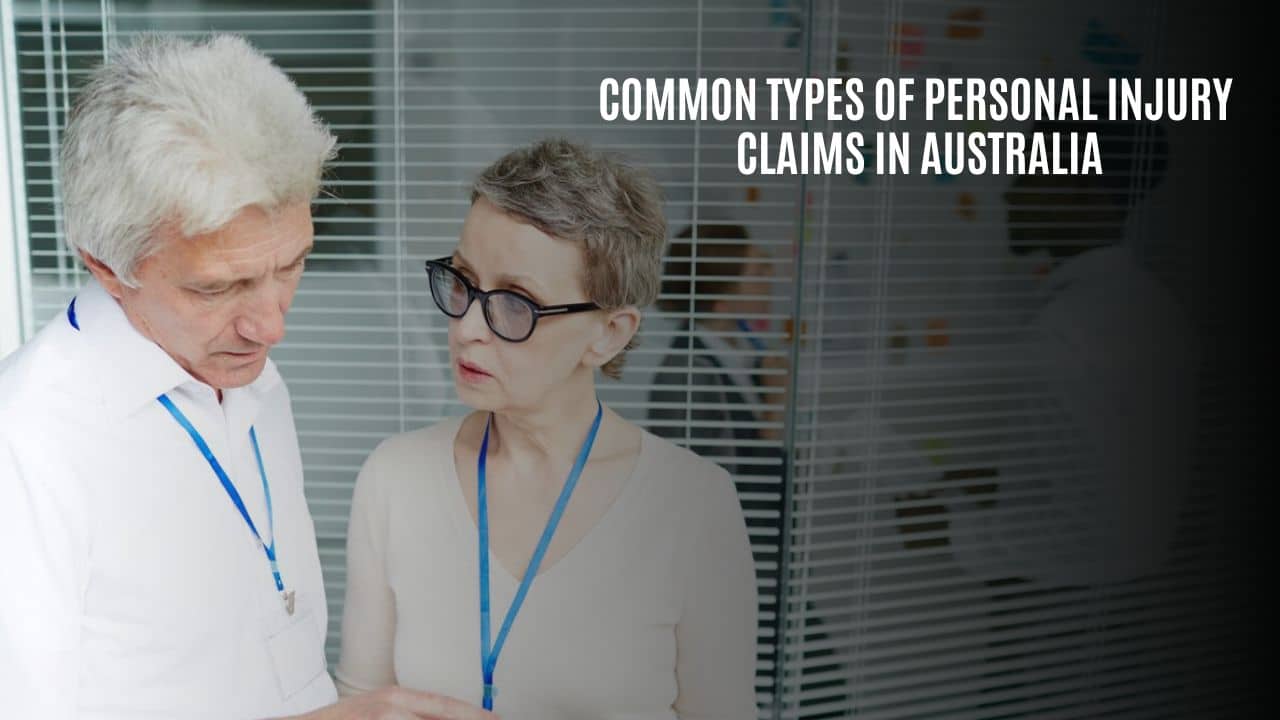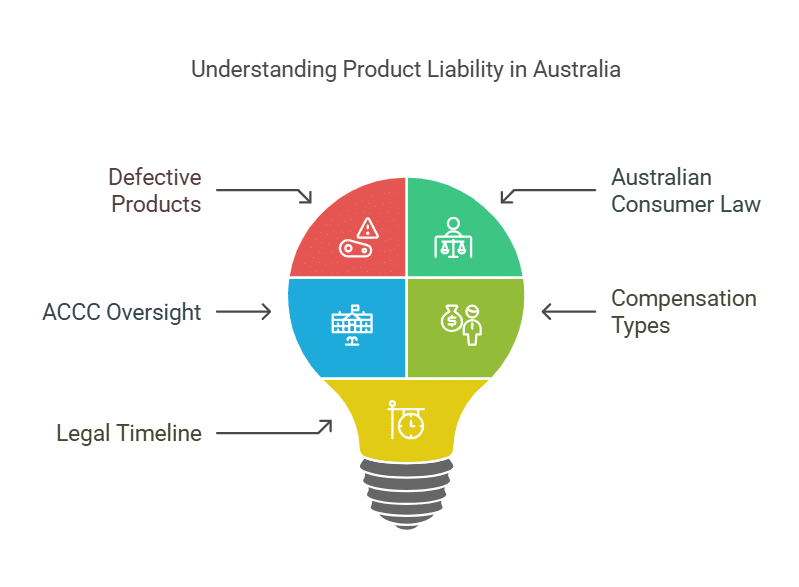Accidents often occur unexpectedly. They can leave you hurt, scared, and unsure of what to do next. Many people don’t know they may be able to get help through a personal injury claim if someone else caused the accident.
In Australia, there are many types of personal injury claims, like motor vehicle accidents or workplace injuries. These claims offer financial support for medical bills, lost wages, and pain and suffering.
This blog will explain 12 common types of personal injury claims in Australia. It will guide you on how these work and what steps to take next. Keep reading to learn more!
Motor Vehicle Accident Injury Claims
Motor vehicle accident claims are common in personal injury law. They help injured people recover losses from accidents like car crashes or traffic collisions. In New South Wales (NSW), laws such as the Civil Liability Act 2002 handle these cases.
Victims can claim for ‘medical bills’, lost wages, and pain and suffering caused by their injuries.
Negligence must be proven for a successful claim. This includes showing that the driver breached their duty of care, causing harm that was foreseeable and directly tied to their actions.
On average, payouts for motor vehicle accident injury claims reach $125,000 per case. Over 12 months leading up to October 2024, about 12,000 motor vehicle claims’ were filed in NSW alone.
Workplace-Related Injury Claims
Workplace injuries happen often and can cause serious problems. If hurt at work, you must report it to your employer before filing a workers’ compensation claim. In Victoria, WorkCover Insurance covers these claims under a no-fault system.
This means injured workers can get help even if no one is blamed for the accident. Benefits include weekly payments, coverage for medical bills, and lump sum payouts for pain and suffering.
On average in Australia, payouts reach about $53,758 per claim.
In New South Wales alone, there were 115,332 workers’ compensation claims from July 2023 to July 2024. Time limits matter too—claims usually need submission within 6 months of the injury date.
Common workplace injuries include slips or falls on site or long-term conditions like back pain caused by poor working conditions. Workers injured on the job should seek legal advice promptly to ensure they meet deadlines and protect their rights under professional standards legislation.
Claims for Medical Negligence
Medical negligence claims happen when healthcare professionals fail to meet proper standards. This includes surgical mistakes, misdiagnosis, and errors with medication or implants.
Proving such claims requires showing a breach of duty of care by the doctor or hospital staff that caused harm. Cases like “Rogers v. Whitaker” highlight how doctors must fully explain risks to patients before treatments.
From 2002 to 2008, an Australian study analyzed 481 malpractice cases. About 16% involved consent issues in cosmetic surgeries. Compensation can cover pain and suffering, lost wages, medical bills, and other damages.
The maximum payout for pain and suffering is $722,000 (adjusted yearly). Consult personal injury lawyers for expert legal advice on these types of claims.
Claims for Public Liability Injuries
Public liability claims arise if someone gets hurt in a public or private space due to negligence. Examples include slips on wet floors, falls on unsafe stairs, or injuries from faulty playground equipment.
Such accidents often happen in shopping centers, parks, schools, or rented properties. Victims can seek compensation for lost wages, medical bills, and pain and suffering.
The time limit for filing is three years from the injury date or discovery of harm. Reporting the incident promptly strengthens the case. Settlements may reach hundreds of thousands of dollars depending on severity and impact.
Seeking legal advice early helps ensure proper handling of your claim.
Product Liability Injury Claims
Defective products can cause harm to buyers and users. Product liability claims hold companies responsible for these injuries. Under Australian Consumer Law (ACL), you can seek compensation without proving negligence.
This law protects buyers from unsafe items made or sold in Australia. The Australian Competition and Consumer Commission (ACCC) oversees this, as do state-level consumer safety organizations.
Victims may recover costs like medical bills, lost wages, or general damages for pain and suffering. For example, if a medication error harms you due to poor labeling, you could file a product liability injury claim.
You must start your legal case within three years of discovering the injury caused by the product. Always check records and consult legal advice quickly for a stronger case.
Claims for Slips, Trips, and Falls
Slip, trip, and fall claims occur in places like malls, hospitals, restaurants, or public spaces. Such accidents often leave victims with severe injuries needing long-term care or surgery.
For example, a Sydney business owner won $540,000 after falling at work due to unsafe conditions. These cases can also happen at workplaces. Workers hurt on the job may file for workers’ compensation through WorkCover.
Settlements for these claims can reach hundreds of thousands of dollars depending on injury severity and loss suffered. Victims can seek payment for medical bills, pain and suffering, and lost wages caused by negligence.
Hire legal representation to prove liability if property owners fail their duty of care under public liability laws.
Injury Claims for Children
Children cannot file personal injury claims on their own. Parents or legal guardians must act on their behalf. Common reasons for these claims include car accidents, dog attacks, and injuries caused by faulty toys or playgrounds.
Compensation can cover medical bills, pain and suffering, lost future wages, and extra care costs. Courts must approve any settlement to protect the child’s interests. The funds usually stay in trust until the child turns 18 years old.
– Australian Legal Information Institute (AustLII)
– Law Council of Australia
Psychological and Emotional Injury Claims
Psychological injuries occur after accidents, trauma, or negligence. These can include anxiety, depression, post-traumatic stress disorder (PTSD), or emotional distress. Studies show that 31% of Australian patients had a psychiatric disorder within 12 months of an injury.
At three months post-injury, 25% reported high psychological distress levels. This dropped to 15% by one year but rose slightly to 16% at two years. Such struggles often occur even if the physical injuries are minor.
Stress from medical bills, lost wages, and pain amplifies these impacts.
Certain factors make some people more prone to emotional harm after an accident. People aged over 45 years face higher risks due to life changes and health challenges. Low income and poor pre-accident health also increase suffering rates significantly in victims with personal injuries claims.
Assault and Criminal Injury Claims
High-risk jobs, like nurses, police officers, teachers, and security staff, face more danger from workplace violence. Assault claims linked to these incidents cause workers to miss an average of 5.2 weeks at work per case.
These claims cost about $9,500 on average in Australia.
Many states allow dual personal injury claims for workers’ compensation and criminal injuries compensation. Rules for this vary by state but aim to cover pain and suffering caused by the assault or crime.
Criminal injuries compensation programs have changed over 50 years, adopting ideas from systems used in the U.S. and U.K.
1. Australian Institute of Criminology.
2. Safe Work Australia.
Injury Claims in Sports
Sports injuries can lead to personal injury claims, especially in contact sports like AFL. Common injuries include hamstring strains, ACL tears, and shoulder dislocations. Concussion cases have risen due to stricter management protocols from 2006 to 2015.
In adult male community players, lower limb injuries make up between 40% and 68% of reported cases.
Legal issues may arise if a club or organization fails proper concussion care. Claims could allege a breach of duty of care related to player safety. For example, mishandling concussions might result in long-term problems for the athlete, leading them to file against clubs or insurers under public liability claims or workers compensation laws.
– Australian Football League Injury Reports (2006–2015)
– Legal advice resources on sports-related personal injury claims
Claims for Animal Attacks
Victims of dog attacks in Australia can seek compensation for their injuries. Such claims often cover medical bills, lost wages, and personal items damaged during the attack. For a valid claim in New South Wales (NSW), victims must prove who is at fault and how serious the injury is.
Immediate medical treatment after a bite is essential, as untreated wounds may worsen or become infected.
The law allows up to three years from the date of the incident to file a claim in court. This includes claiming costs related to pain and suffering caused by the attack. Legal advice can help build strong cases against negligent owners of animals involved in attacks.
Many lawyers offer no-win-no-fee agreements for these types of cases, making it easier for victims without paying upfront legal fees.
1) Animal Law Institute (animalattacks.org.au)
2) Compensation Council NSW (compensationnsw.gov.au)
Aviation and Boating Accident Claims
Aviation and boating accident claims cover injuries caused by negligence during air travel or on boats. These fall under public liability claims in Australia. Injuries could result from unsafe conditions, poor maintenance, or errors by operators.
Compensation may include medical bills, lost wages, psychological injury costs, and pain and suffering.
Important evidence includes medical records, witness statements, and photos of the incident area. Claims must be filed within a limitation period—usually 3 to 6 years. Australian residents injured due to negligence are eligible for these claims.
Even if partially at fault, you can still receive compensation with some adjustments.
Takeaways
Personal injury claims help Australians get justice and financial support after an accident or harm. Seeking legal advice is a smart step for those dealing with pain and suffering or lost wages.
Dr. Emily Carter, a senior legal consultant, has 20 years of experience in personal injury law. She holds degrees from the University of Sydney and has authored research on medical negligence and workplace injuries.
Her expertise ensures clarity on complex issues like public liability claims and motor vehicle accidents.
Dr. Carter explains that understanding types of personal injury cases is key to fair compensation. Cases involving workers’ compensation, compulsory third-party insurance, or medical malpractice require careful handling to meet professional standards legislation.
She emphasizes that safety and ethical compliance are vital in every claim process. Each case must follow laws like time limits for workers’ compensation claims or evidence-based practices supported by accurate medical records.
To use this guide effectively, Dr. Carter advises injured individuals consult no-win-no-fee lawyers early on to avoid missed deadlines or errors with court proceedings. Keep all medical certificates updated for smooth processing by insurers.
While personal injury claims offer many benefits like coverage for surgery costs, they can be stressful without expert help due to strict timelines and high proof requirements compared to other options globally.
Dr. Carter strongly recommends pursuing these processes carefully as they offer significant aid during recovery periods if handled properly under Australian law’s standard of care guarantees.
FAQs on Common Types Of Personal Injury Claims In Australia
1. What are the most common types of personal injury claims in Australia?
The most common personal injury claims include motor vehicle accidents, workplace injuries, public liability claims, medical malpractice, and psychological injuries.
2. How can I file a workers’ compensation claim for a workplace injury?
To file a workers’ compensation claim, report the incident to your employer immediately. Provide a medical certificate and any supporting evidence like medical records or proof of lost wages.
3. What does “no win, no fee” mean in legal services?
“No win, no fee” means you only pay legal fees if your case succeeds. This is also called a conditional fee agreement or contingency fee arrangement.
4. Can I make a claim for pain and suffering after an accident?
Yes, you can seek compensation for pain and suffering if someone else’s breach of duty of care caused your injury.
5. What should I do if my health professional made an error during treatment?
If you experienced harm due to medication errors or other mistakes by medical professionals like doctors or dentists, you may have grounds for a medical negligence claim.






































